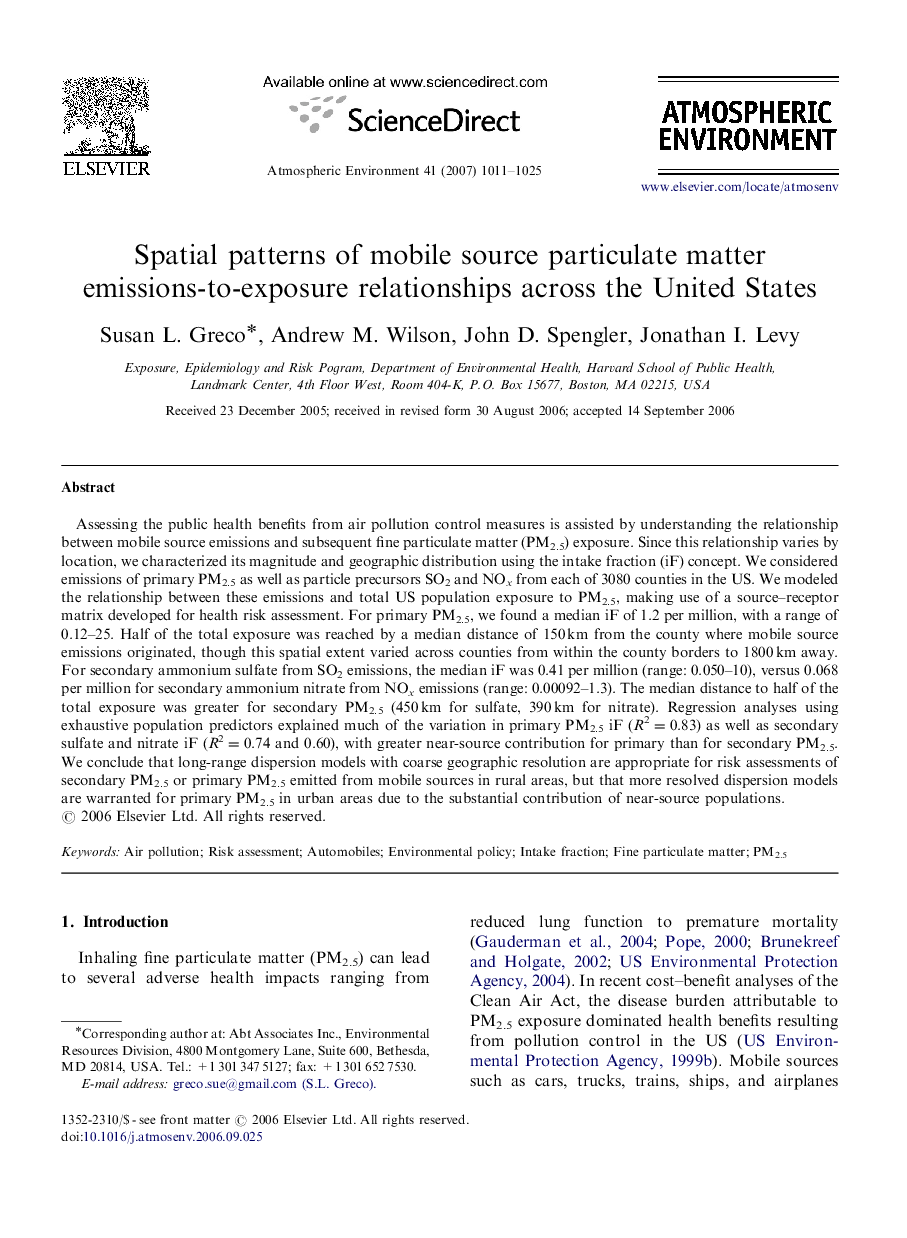| کد مقاله | کد نشریه | سال انتشار | مقاله انگلیسی | نسخه تمام متن |
|---|---|---|---|---|
| 4443076 | 1311177 | 2007 | 15 صفحه PDF | دانلود رایگان |

Assessing the public health benefits from air pollution control measures is assisted by understanding the relationship between mobile source emissions and subsequent fine particulate matter (PM2.5) exposure. Since this relationship varies by location, we characterized its magnitude and geographic distribution using the intake fraction (iF) concept. We considered emissions of primary PM2.5 as well as particle precursors SO2 and NOx from each of 3080 counties in the US. We modeled the relationship between these emissions and total US population exposure to PM2.5, making use of a source–receptor matrix developed for health risk assessment. For primary PM2.5, we found a median iF of 1.2 per million, with a range of 0.12–25. Half of the total exposure was reached by a median distance of 150 km from the county where mobile source emissions originated, though this spatial extent varied across counties from within the county borders to 1800 km away. For secondary ammonium sulfate from SO2 emissions, the median iF was 0.41 per million (range: 0.050–10), versus 0.068 per million for secondary ammonium nitrate from NOx emissions (range: 0.00092–1.3). The median distance to half of the total exposure was greater for secondary PM2.5 (450 km for sulfate, 390 km for nitrate). Regression analyses using exhaustive population predictors explained much of the variation in primary PM2.5 iF (R2=0.83) as well as secondary sulfate and nitrate iF (R2=0.74 and 0.60), with greater near-source contribution for primary than for secondary PM2.5. We conclude that long-range dispersion models with coarse geographic resolution are appropriate for risk assessments of secondary PM2.5 or primary PM2.5 emitted from mobile sources in rural areas, but that more resolved dispersion models are warranted for primary PM2.5 in urban areas due to the substantial contribution of near-source populations.
Journal: Atmospheric Environment - Volume 41, Issue 5, February 2007, Pages 1011–1025